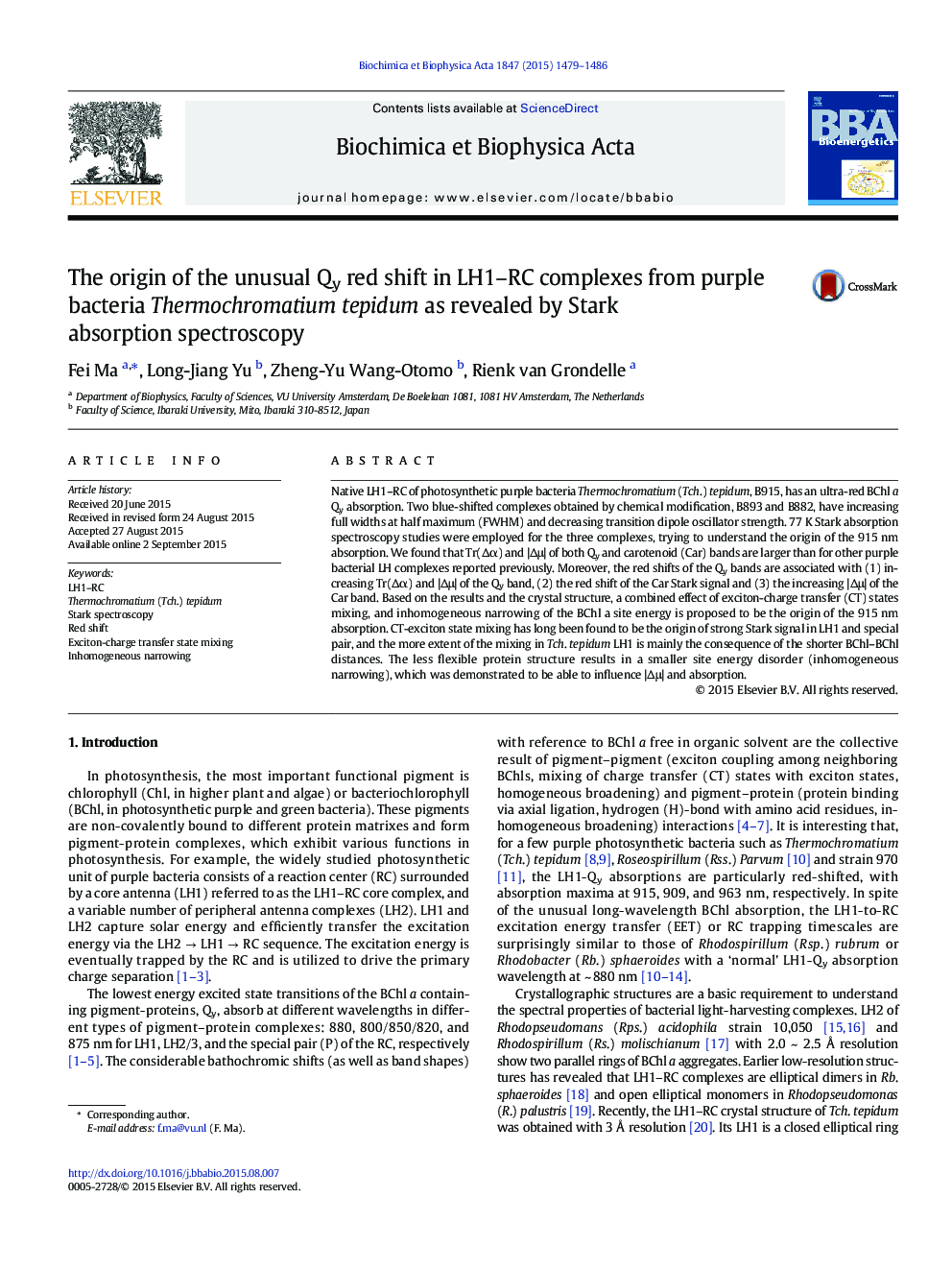| کد مقاله | کد نشریه | سال انتشار | مقاله انگلیسی | نسخه تمام متن |
|---|---|---|---|---|
| 1942070 | 1537040 | 2015 | 8 صفحه PDF | دانلود رایگان |

• We compared the absorption, CD and Stark absorption spectroscopy of three Tch. Tepidum LH1-RC complexes.
• The arrangement of BChl a molecules influences |Δμ| values/orientations and the transition energy of the BChl a-Qy band.
• CT-exciton state mixing and inhomogeneous narrowing are responsible for the ultra-red Qy absorption of the native B915 complex.
Native LH1–RC of photosynthetic purple bacteria Thermochromatium (Tch.) tepidum, B915, has an ultra-red BChl a Qy absorption. Two blue-shifted complexes obtained by chemical modification, B893 and B882, have increasing full widths at half maximum (FWHM) and decreasing transition dipole oscillator strength. 77 K Stark absorption spectroscopy studies were employed for the three complexes, trying to understand the origin of the 915 nm absorption. We found that Tr(∆α) and |∆μ| of both Qy and carotenoid (Car) bands are larger than for other purple bacterial LH complexes reported previously. Moreover, the red shifts of the Qy bands are associated with (1) increasing Tr(∆α) and |∆μ| of the Qy band, (2) the red shift of the Car Stark signal and (3) the increasing |∆μ| of the Car band. Based on the results and the crystal structure, a combined effect of exciton-charge transfer (CT) states mixing, and inhomogeneous narrowing of the BChl a site energy is proposed to be the origin of the 915 nm absorption. CT-exciton state mixing has long been found to be the origin of strong Stark signal in LH1 and special pair, and the more extent of the mixing in Tch. tepidum LH1 is mainly the consequence of the shorter BChl–BChl distances. The less flexible protein structure results in a smaller site energy disorder (inhomogeneous narrowing), which was demonstrated to be able to influence |∆μ| and absorption.
Journal: Biochimica et Biophysica Acta (BBA) - Bioenergetics - Volume 1847, Issue 12, December 2015, Pages 1479–1486